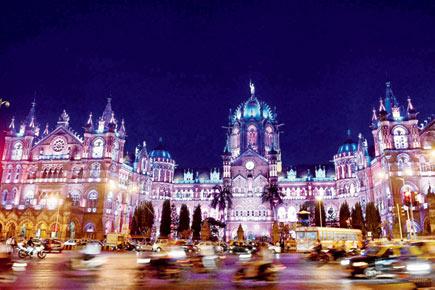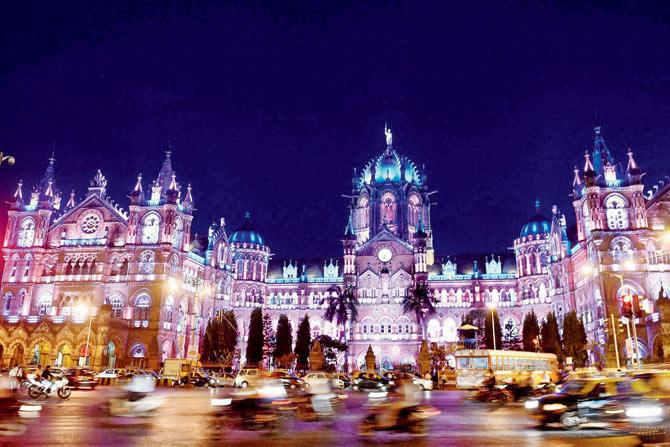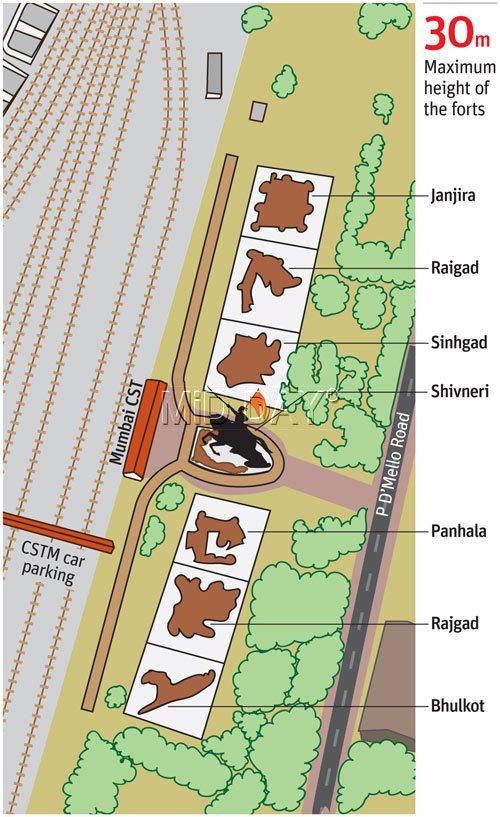The Victoria Terminus railway station, now known as the Chhatrapati Shivaji Terminus, was opened on this day in 1887. A look at some interesting facts and triva about the UNESCO World Heritage Site on this occasion...


Chhatrapati Shivaji Terminus
ADVERTISEMENT
The Victoria Terminus railway station, now known as the Chhatrapati Shivaji Terminus, was opened on this day in 1887. A look at some interesting facts and triva about the UNESCO World Heritage Site on this occasion...
Early history
In the 1850s, the Great Indian Peninsular Railway built its railway terminus in the Bori Bunder area along the Eastern shore line of Mumbai. Bori Bunder was used as a storehouse for goods imported and exported from Mumbai.

Bridge over Thane creek a year later after the first train ride in 1853, Mumbai witnessed another first — the first Indian railway bridge, which was completed in 1854 over Thane Creek. Pic courtesy/Central Railway archives
The historic first passenger trian in India from Bori Bunder to Thane covering a distance of 35 km, which took about 57 minutes formally heralding the birth of the Indian Railways. The then Governor Lord John Elphinstone flagged off India's first ever rail journey while His Excellency's band played in one of its carriages and that day was declared a holiday. Eminent citizens like Sir Jamserjee Jeejeebhoy were on that train. (Read more)
Bori Bunder station was eventually rebuilt as Victoria Terminus, named after the then reigning Queen. Work began in 1878 and it was completed 10 years later. Rs 16,35,562 was spent for the offices and Rs 10,40,248 for the station. Unlike the CST building, which was completed in May 1888, Bori Bunder station was located behind today’s Dhobi Ghat and was just a make-shift wooden structure.
Previously known as Bombay Passenger Station it was opened for traffic on January 1, 1882.
Designed by the consulting British architect Frederick William Stevens, who earned the commission to construct the station after a masterpiece watercolour sketch by draughtsman Axel Haig. The final design bears some resemblance to St Pancras railway station in London. GG Scott's plans for Berlin's parliament building had been published four years before, and also has marked similarities to the station's design. Stevens died of malaria in 1900 and is buried at Sewri Cemetery. A street behind Regal Cinema is named after him. He himself drew the ornamental detailings of the terminus.
Original built as the headquarters of the Great Indian Peninsular Railway, it became a famous architectural landmark in a Gothic-revival style. A number of ancillary buildings have been added subsequently, all designed so as to harmonise with the main structure. The original platforms were from 1-9.
After the extension of the Harbour Line from its previous terminus at Dockyard road to VT, to prevent congestion, a new mainline concourse with platforms 10-13 to the east of the existing suburban concourse was constructed, to handle main line traffic was erected in 1929. The original building is still in use to handle suburban traffic and is used by over three million commuters daily. It is also the administrative headquarters of the Central Railway.
VT becomes CST
In 1996, Victoria Terminus was renamed Chhatrapati Shivaji Terminus by Suresh Kalmadi, who was the Minister of Railways at the time. It was done to honour legendary Maratha ruler Chhatrapati Shivaji.
CST a fortress?
In February 2016, Central Railway (CR) has proposed to build a statue of Shivaji Maharaj at CST. It is also likely to construct replicas of seven forts belonging to the famed Maratha warrior at the UNESCO World Heritage site.
Sources in CR said that the JJ School of Arts gave a presentation on this proposed façade where the replicas of seven forts are likely to come.

The façade will be similar to the shapes of forts, namely Raigad, Panhala, Sinhgad, Shivneri, Rajgad, Bhulkot and Janjira. The officials claimed that they would be utilising the space next to platform 18 of CST, which is parallel to P D'Mello road. These forts will have light and sound shows, showcasing the life of Shivaji Maharaj. All of these will be developed on a 100x600 yard area. (Read more)
World Heritage Site
On 2 July 2004, the station was nominated as a World Heritage Site by the World Heritage Committee of UNESCO. The official website of UNESCO describes it as, an outstanding example of Victorian Gothic Revival architecture in India, blended with themes deriving from Indian traditional architecture."
The Mumbai terror attacks
Pakistani terrorist Ajmal Kasab was caught at the Chhatrapati Shivaji Terminus on 26 November 2008 for opening fire and throwing grenades along with two compatriots. He was later hanged on 21 November 2012 and buried at Yerwada Jail in Pune.
An illuminated CST on World Heritage Day
Chhatrapati Shivaji Terminus building in Mumbai was illuminated with different colours on the occasion of World Heritage Day in April 2016. Although, CST has been decorated by special lighting on several occasions in the past, including the Independence Day, the illumination of this monument on World Heritage Day was a rare spectacle for travellers and locals alike. (View video)
 Subscribe today by clicking the link and stay updated with the latest news!" Click here!
Subscribe today by clicking the link and stay updated with the latest news!" Click here!







